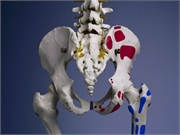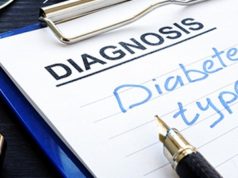Slower loss of hip bone mineral density, less bone turnover seen in older obese patients losing weight
TUESDAY, Dec. 10, 2019 (HealthDay News) — Both resistance and combined aerobic and resistance exercise are associated with less weight loss-induced bone loss than aerobic exercise alone, according to a study published online Dec. 4 in the Journal of Bone and Mineral Research.
Reina Armamento-Villareal, M.D., from the Baylor College of Medicine in Houston, and colleagues randomly assigned 160 obese older adults (≥65 years) to a control group or to aerobic exercise, resistance exercise, or both as part of a weight-loss intervention. Changes in bone mineral density (BMD; total hip, femoral neck, trochanter, intertrochanter, one-third radius, lumbar spine) and bone markers were assessed.
The researchers found that after six months of intensive lifestyle interventions, compared with a control group that had no weight-management or exercise interventions, BMD decreased less in the resistance group (−0.7 percent) and combination group (−1.1 percent) versus the aerobic group (−2.6 percent). In the aerobic group, serum C-telopeptide, procollagen type 1 N-propeptide, and osteocalcin concentrations increased more (33, 16, and 16 percent, respectively) than in the resistance group (7, 2, and 0 percent, respectively) and in the combination group (11, 2, and 5 percent, respectively). Declines in whole body mass and serum leptin were independent predictors of the decline in hip BMD.
“Both resistance and combined aerobic and resistance exercise can be recommended to protect against bone loss during weight loss therapy of older adults with obesity,” the authors write.
Abstract/Full Text (subscription or payment may be required)
Copyright © 2019 HealthDay. All rights reserved.








